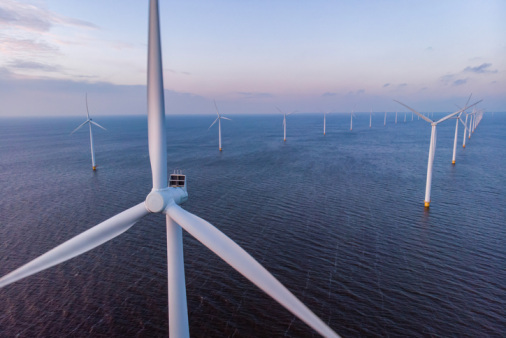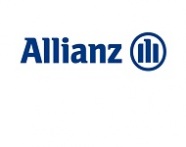The risks of renewables: Top 5 risks of wind energy

Authored by Allianz
Attempting to mitigate the effects of climate change has led to many positive breakthroughs in technology, and the use of renewable energy sources is thankfully now commonplace.
However, there are risks that come with the use of renewables, and here we explore the top five associated with the use of wind energy and explain why there is a need for stronger standards within the sector.
1. Aging turbines
Turbines have an average lifespan of approximately 20 years – although if properly maintained, they can last up to 25. As they get older, their output becomes less effective - so any damage can be costly as they become more inefficient. Turbines require varying degrees of reconditioning and refurbishing – from replacement parts to full rebuilds. Aging equipment, such as damage to gears, can be costly to replace and certain failures, such as the short circuiting of equipment, can have even further implications, such as causing fires.
2. Severe weather and weather inconsistency
In 2022, high winds caused a £20 million wind turbine to collapse, damaging it’s blades1. Wind turbines are of course designed to operate in winds, however extreme wind speeds that are higher than the maximum operating limit of the turbines result in turbines being shut down and this causes disruption to operations.
Wind turbines also suffer from disruption caused by inconsistency of the wind that’s supplying the farm. Intermittency occurs when wind levels drop and because winds blow at various speeds it’s very hard to predict how much energy can be harvested at any one time. This intermittency can cause business disruption and so alternative energy reserves are required for the times when there’s little or no wind. These inefficiencies are often unpredictable meaning that it’s difficult to assess the operational risks for insurance purposes.
3. Maintenance issues
Wind turbines are complex pieces of machinery and there’s a lot that can go wrong with them. The turbine blades, generators and gearboxes can often fail - meaning that regular maintenance is very important. However, due to the remote locations of wind farms it can be difficult to carry out maintenance duties. The size and height of the turbines also make maintenance difficult, meaning that wind farms are frequently exposed to the risk of business interruption arising from poorly maintained machinery and cables.
Maintenance and repair to wind turbines is made even more difficult because it’s not always easy to get the parts required. We’re still seeing supply chain disruptions continuing through 2023, which, coupled with a shortfall of key engineers at maintenance companies, means parts are now more costly, have longer delivery times and are taking longer to repair - compounding the issues associated with the maintenance and repair of wind turbines. Ensuring a realistic indemnity period when purchasing insurance is key in the current economic climate.
4. Theft
Most large scale wind farms are in remote locations which makes theft a serious concern. Copper theft is one of the biggest security concerns for wind turbine owners as it’s so high in value and is relatively easy to strip from the turbine cables. Theft of cables can lead to significant down time and costly repair bills.
Use of lighting, alarm systems and fencing are important throughout both the construction and operational stages to help prevent thefts - as well as high quality locks and suitable CCTV systems.
5. Circular economy
It’s predicted that over the next few years, over 8000 turbine blades will be decommissioned in the US alone, and this is thought to grow as wind farms increase in number2.
Turbines are made of a fibreglass composite material and because of this, it’s not currently cost effective to recycle them.
However, there are many projects underway looking into how these can be reused. For example, there are now companies that recycle turbine blades, using the shredded fibreglass to replace raw building materials2.
It’s also possible to refurbish turbines and these are often sold at a fraction of the cost of new turbines, and yet still have the potential to perform well for many years.
Looking to the future
Despite the risks associated with wind farms, there are a lot of positive steps that are being taken now to assure the future of renewables.
It’s clear that the standardisation of testing, energy conversion, use of materials, and health and safety practices is crucial for the renewables industry, and needs to be applied consistently across the sector if we want to reduce the risks involved in the harvesting of green energy, and see these installations achieve their full potential.
About Allianz
Allianz Insurance is one of the largest general insurers in the UK and part of the Allianz Group, a leading integrated financial services provider and the largest property and casualty insurer in the world.
The mission of Allianz Insurance is to be the outstanding competitor in our chosen markets by delivering products and services that our clients recommend, being a great company to work for and achieving the best combination of profit and growth. We aim to achieve this by putting the customer at the heart of everything we do.
Allianz is able to offer customers a wide range of products and services including home and motor and commercial insurance with full range of products and service for sole traders' right up to large commercial organisations.
Allianz Insurance employs over 4,500 people across a network of 20 offices in the UK and the company’s Head Office is situated in Guildford, Surrey. Our heritage and financial strength help make Allianz what it is today; a safe and trusted partner. Over 40 FTSE100 companies partner with Allianz. youTalk-insurance sharing Allianz Insurance news and video

